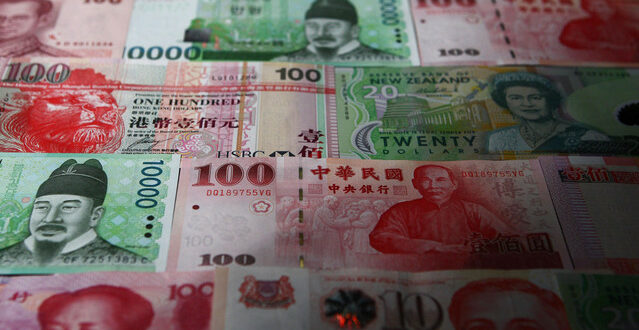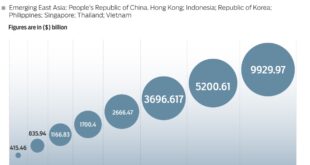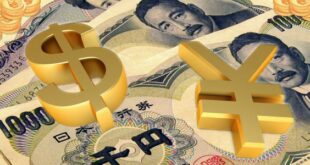TOKYO: Asia-Pacific leaders are scrambling to reverse a decline in their currencies as an expected tapering of the US Federal Reserve’s stimulus and Chinese economic slowdown send waves of foreign capital flowing outside their borders.
Fears of a cash flight have sparked a warning from South Korea’s finance minister about possible “spillover effects” from the Fed’s wind down, ahead of a weekend G20 meeting in Moscow where the issue is likely to be in focus.
“It is necessary for the United States to carefully consider not only its own economic conditions but also the global impact in determining the timing, pace and manner of its exit from stimulus,” Hyun Oh-seok said this week.
The Fed’s quantitative easing — which saw trillions of dollars pumped into the world’s top economy in a bid to stoke growth –pushed US interest rates and the dollar down, sending investors to emerging economies looking for better returns.
While Japan has welcomed a slump in the value of the yen against the dollar — it has lost about a third since November, with Japan’s own massive easing measures adding to the selling sentiment — most of Asia’s smaller economies have been sent reeling.
Recent evidence of a US recovery, which boosts the case for rowing back the stimulus, has led to an exodus from Asia-Pacific and other emerging economies including Brazil, in turn hitting currencies from India to South Korea to Indonesia.
India’s rupee has been the worst-performing major Asian currency, dropping from around 55.50 at the start of the financial year to a record low of 61.21 rupees to the dollar last week. Indonesia’s rupiah weakened to a near four-year low of just above 10,000 to the dollar last week.
The weakening “is due to speculation over the tapering plans by the Fed, which encouraged carry-trade of those currencies to unwind”, said Toshihiko Matsuno, research head at SMBC Friend Securities in Tokyo. Carry trade sees investors sell a low-yielding currency to buy another unit that offers a higher interest rate.
“The more they were bought, the more they were sold,” he said.
Asia’s currencies have also been hurt by a slowdown in the region’s economies as export powerhouse China sputters owing to slack demand in debt-hit Europe while the United States slowly gets back on track.
On Tuesday, the Asian Development Bank said worries over China, the world’s number-two economy, have sent shivers across the continent and cut its growth forecast for developing Asia this year to 6.3 percent, from 6.6 percent.
“The slowdown in emerging economies had started even before the Fed tapering fears hit,” said Tsunemasa Tsukada, chief forex trading manager at Mitsubishi UFJ Trust and Banking.
The ADB downgrade comes about three months after the Asia-Pacific Economic Cooperation forum warned a “sudden reversal” of capital flowing into regional economies might spark sharp asset price corrections. This, it said, “could cause detrimental damage to the real economy”.
But central banks are making moves to address the problem.
The Reserve Bank of India this week hiked short-term interest rates to shore up the beleaguered rupee and reduce speculation, even at a time it is struggling to get the economy back in shape and looking for business investment.
Bank Indonesia earlier in July hiked its benchmark rate for a second consecutive month, while it has also increased the amount it pays lenders for their overnight deposits.
China’s economic woes have also damaged the commodity-weighted Australian dollar, which has tumbled about 10 percent in the past three months, while the central bank’s decision to cut interest rates to a historic low of 2.75 percent has sent investors running.
However, there has been a recent pick-up in some Asian units as markets price in the expected Fed moves, with South Korea’s won bouncing off a year low of 1,161.40 won against the dollar last month to sit at 1,121.00 now.
“The won used to be considered quite vulnerable to external uncertainties but it is now more stable than many others,” SK Securities’ Kim Hyo-Jin told AFP.
Wednesday will see Fed chief Ben Bernanke address congress for a six-monthly grilling on the economy and the bank’s policies. Dealers will be hanging on every word looking for clues about when it will begin to draw down its bond-buying.
His comments earlier this month that the easy money will continue for the foreseeable future may have helped limit capital flows, said Matsuno at SMBC Friend Securities.
“The comments had some investors thinking that they might as well buy some more (Asia-Pacific) currencies,” he said.
– AFP/xq
 Asia Finance News Asia finance news, banking, market analysis, business, Forex, trade, Cryptocurrency as it is happening in Asia. Trusted gateway for Asian financial news.
Asia Finance News Asia finance news, banking, market analysis, business, Forex, trade, Cryptocurrency as it is happening in Asia. Trusted gateway for Asian financial news.





